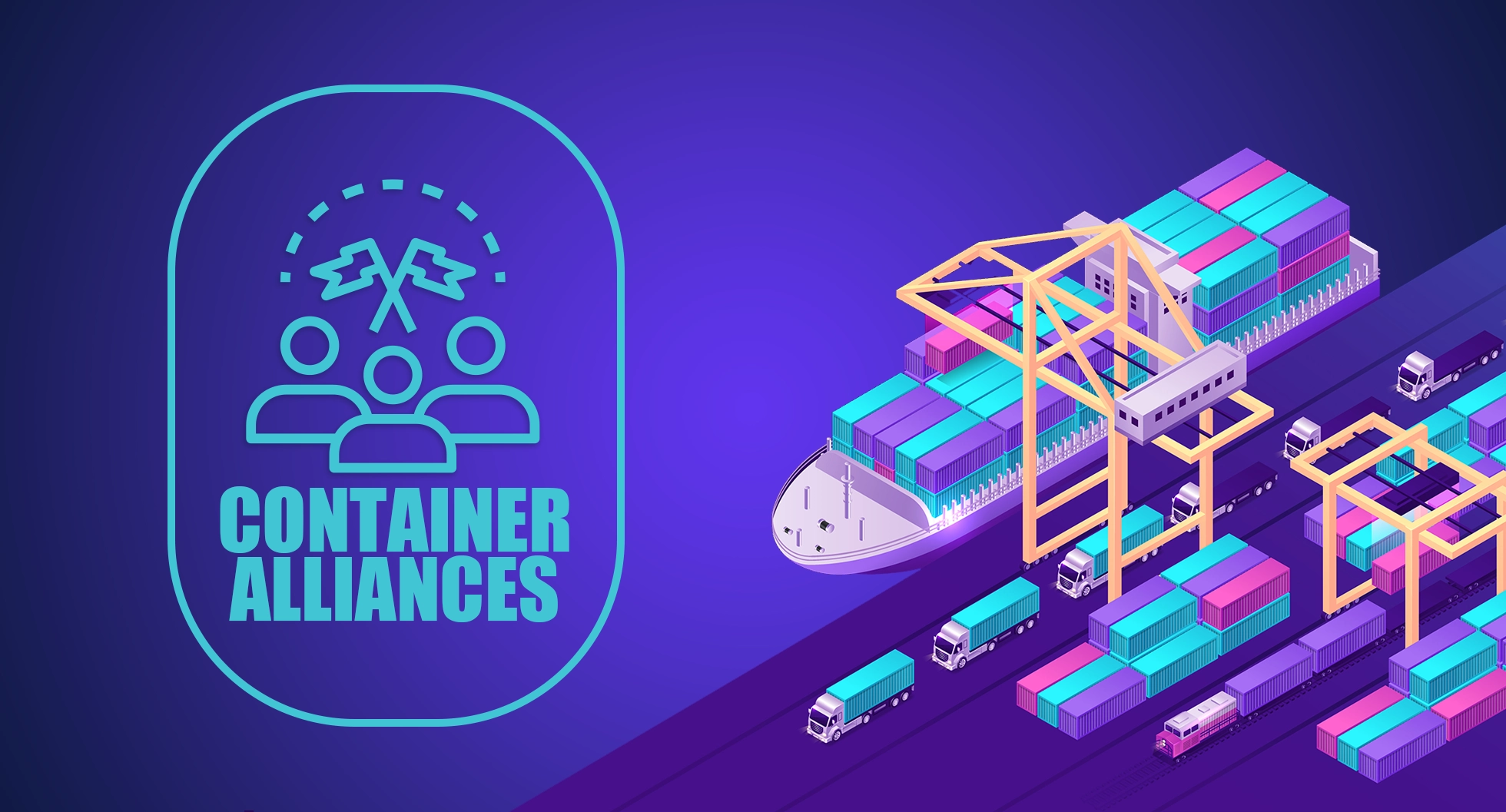Industry Review
The Major Container Alliances: 2M, THE Alliance, and Ocean Alliance

Global trade relies heavily on container shipping, which moves goods efficiently across oceans. To optimize operations, reduce costs, and expand their reach, major shipping companies form strategic partnerships known as shipping alliances. These alliances allow carriers to share vessels, routes, and port calls, improving service efficiency while maintaining competitiveness. Among the most significant alliances in recent years are 2M, THE Alliance, and Ocean Alliance. This article explores their formation, structure, and impact on the shipping industry.
1. The 2M Alliance
The 2M Alliance was formed in 2015 as a vessel-sharing agreement (VSA) between Maersk Line (Denmark) and Mediterranean Shipping Company (MSC) (Switzerland), the two largest container shipping companies in the world. The alliance was initially established to counterbalance competition and improve service reliability following the collapse of the P3 Network, a previously proposed alliance that faced regulatory challenges.
Key Features of the 2M Alliance:
- Covers major trade routes, primarily between Asia, Europe, and North America.
- Provides operational flexibility, enabling Maersk and MSC to optimize schedules and improve fuel efficiency.
- Unlike other alliances, 2M has no joint operations center, meaning each member manages its own marketing and pricing.
- Limited cooperation with other carriers—in 2017, Hyundai Merchant Marine (HMM) and ZIM had separate cooperation agreements with 2M, though these arrangements did not lead to full membership.
Challenges and Developments:
Despite its efficiency, the 2M Alliance faced challenges related to balancing the interests of its two members. By 2023, both Maersk and MSC decided to end the alliance in 2025. The move was driven by strategic shifts, including MSC’s fleet expansion and Maersk’s increasing focus on integrated logistics services.
2. THE Alliance
THE Alliance was launched in 2017 and comprises several prominent carriers: Hapag-Lloyd (Germany), Ocean Network Express – ONE (Japan), Yang Ming (Taiwan), and HMM (South Korea) (which officially joined as a full member in 2020).
Key Features of THE Alliance:
- Expansive global coverage, particularly strong on Asia-Europe, Asia-North America, and Transatlantic routes.
- Dynamically adjusted services—the alliance adapts routes based on market conditions and demand.
- Operational flexibility—for example, HMM joined as a full member in 2020 after years of cooperation, strengthening the alliance’s service network.
Challenges and Developments:
- The alliance has faced disruptions due to fluctuating demand, particularly during the COVID-19 pandemic, which led to blank sailings (canceled vessel departures).
- Fleet capacity limitations compared to 2M and Ocean Alliance sometimes put it at a disadvantage in terms of market share.
- Competition from newly independent MSC (post-2M) may impact THE Alliance’s ability to maintain its competitive edge in the coming years.
3. Ocean Alliance
The Ocean Alliance was formed in 2017 and includes CMA CGM (France), COSCO Shipping (China), Evergreen Line (Taiwan), and OOCL (Hong Kong, China). This alliance is the largest in terms of total market share and fleet capacity.
Key Features of Ocean Alliance:
- Offers a comprehensive network across Asia, Europe, the Americas, and the Middle East.
- Features a ten-year agreement, making it the most stable of the three major alliances.
- Operates a Day (Dynamic Alliance Yield) system, which allows members to adjust their shipping services flexibly based on demand.
- Heavily supported by COSCO, a state-backed Chinese shipping giant, ensuring financial stability.
Challenges and Developments:
- While strong in the Asia-Europe and Transpacific routes, Ocean Alliance faces regulatory scrutiny, especially concerning COSCO’s influence and ties to the Chinese government.
- Competition from MSC’s independent operations could challenge its dominance in the global market.
- The alliance has continued to expand capacity, investing in newer, more fuel-efficient mega-ships.
The Impact of These Alliances on Global Trade
Shipping alliances have significantly transformed global trade by enabling more efficient cargo movement, reduced operational costs, and optimized vessel utilization. However, alliances also present challenges:
- Regulatory concerns: Governments closely monitor alliances to prevent anti-competitive practices.
- Market volatility: Disruptions like the COVID-19 pandemic and geopolitical tensions affect shipping alliances’ stability.
- Potential reorganization: With 2M set to dissolve in 2025, THE Alliance and Ocean Alliance may face restructuring as shipping lines seek new partnerships.
The Future of Container Shipping Alliances
The impending end of 2M in 2025 could reshape the global shipping landscape. Some experts speculate that MSC may operate independently while Maersk could seek a new partnership. Meanwhile, THE Alliance and Ocean Alliance may need to adjust strategies to maintain competitiveness.
With increasing emphasis on sustainability, digitalization, and fleet efficiency, the shipping industry’s future alliances may focus on green initiatives, alternative fuels, and AI-driven logistics rather than just capacity sharing.
Conclusion
The 2M, THE Alliance, and Ocean Alliance have played a crucial role in shaping global container shipping, offering extensive networks and operational efficiencies. However, with industry shifts, changing market dynamics, and new competition, the future of shipping alliances remains uncertain. As the industry evolves, shipping companies must adapt to emerging trends, including environmental regulations, digital transformation, and geopolitical changes, to stay competitive in the world of global trade.